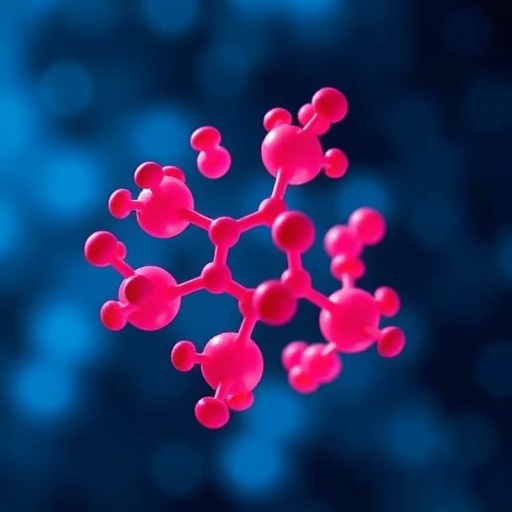In a remarkable discovery within the realm of microbial chemistry, researchers have isolated a new polyketide compound named Linfuranone F (compound 1) from a rare actinomycete belonging to the Sphaerimonospora genus. This finding not only adds to the growing library of bioactive compounds derived from natural sources but also exemplifies the potential of actinomycetes as a source of therapeutic agents. Linfuranones B, C, and D, known antecedents of Linfuranone F, were simultaneously identified in the extraction process, creating an intriguing narrative of biosynthetic relationships among these naturally occurring compounds.
Linfuranone F stands out due to its structure, which is characterized by a furanone moiety, a feature that has been recognized for its various biological activities. The research team utilized advanced spectroscopic techniques to elucidate the molecular structure of this new compound. They compared the spectral data of Linfuranone F with that of Linfuranone C (compound 3) to establish that F is a 6,7-dehydrated derivative of C, solidifying the compound’s relationship within the linfuranone family. This discovery enhances our understanding of the structural diversity found in polyketides and their potential functional capabilities.
As the field of drug discovery increasingly moves towards the exploration of natural products, the finding of Linfuranone F could not have come at a better time. The role of PPARγ (Peroxisome Proliferator-Activated Receptor Gamma) in metabolic disorders, including diabetes and obesity, has placed a spotlight on compounds that act as agonists for this receptor. In their study, the researchers found that Linfuranone F exhibited significant agonistic activity against PPARγ in a reporter gene assay. This activity was notably superior to that of its predecessors, B, C, and D, illuminating its potential as a novel therapeutic agent targeting metabolic pathways.
The robust agonistic activity observed with Linfuranone F demonstrates the possibility of developing new treatments for conditions associated with metabolic dysfunction. It is imperative to delve into the mechanisms underlying this agonistic action and its implications for metabolic regulation. The focus on natural compounds like Linfuranone F underscores the value of biodiversity in drug development, reminding the scientific community of nature’s countless offerings.
Beyond its chemical structure and biological activity, the ecological context from which Linfuranone F was derived is equally noteworthy. The Sphaerimonospora genus, while not widely recognized, represents a group of actinomycetes that thrive in diverse environments, highlighting the need for continued exploration of lesser-studied microbial species. As researchers venture deeper into the biosphere, they stand to uncover a treasure trove of novel compounds that could reshape our understanding of natural product chemistry and its applications in human health.
Acknowledging the synergy between biodiversity and bioactive compound isolation might spur interest in conservation efforts. Protecting these microbial ecosystems could yield an abundance of yet-undiscovered therapeutic entities. Continued work in this area not only promotes scientific advancement but also enhances our stewardship of the planet, aligning ecological sustainability with biomedical innovation.
Furthermore, the implications of these findings reach beyond the laboratory. Stakeholders in pharmaceuticals and healthcare sectors might find Linfuranone F particularly appealing, given the intense market demand for innovative diabetes treatments. The highest agonistic activity of Linfuranone F amongst its peers reinforces the competitive edge that such natural compounds may hold against synthetic alternatives.
As the research into Linfuranone F progresses, future studies will likely examine its pharmacokinetic properties and potential side effects before it can be translated into a clinical setting. Comprehensive investigation is critical to ensure that the benefits of this potent compound can be harnessed without adverse consequences. This pathway from laboratory to market is often fraught with challenges, yet the promise of Linfuranone F remains a beacon of hope for new therapeutic avenues.
Moreover, the ongoing inquiry into the biosynthetic pathways leading to linfuranones offers exciting opportunities for synthetic biology applications. By understanding how actinomycetes synthesize these compounds, researchers might engineer microbial strains for enhanced production or create analogues with improved efficacy. The intersection of microbial genetics and natural product synthesis suggests a vibrant future for drug discovery sciences.
In recapitulating this groundbreaking discovery of Linfuranone F, it is crucial to acknowledge the collaborative nature of contemporary scientific research. The teamwork and shared insights of the authors, including Triningsih, Matsuura, and Komaki, are emblematic of the interconnected efforts that drive breakthroughs in chemistry and pharmacology. Such collaborations can accelerate progress and facilitate interdisciplinary approaches to understanding complex biological systems.
The excitement surrounding Linfuranone F highlights a broader narrative in the scientific community — one that craves innovation derived from nature. Proceeding with due diligence, researchers are well-poised to explore the vast potential that remains untapped within the natural world. By fostering a blend of innovative research methodologies and conservation efforts, the future of pharmacology may very well lean on the rich tapestry of life present in our surroundings.
In conclusion, Linfuranone F is not just another chemical entity; it encapsulates the possibilities inherent in nature’s treasures. With its promising bioactivity against PPARγ and the legacy of linfuranones to build upon, further investigation into this compound and its relatives may yield transformative impacts on the treatment of metabolic disorders. The journey has only just begun, yet the horizon brims with potential.
Subject of Research: Isolation and characterization of Linfuranone F from an actinomycete of the Sphaerimonospora genus.
Article Title: Linfuranone F, a PPARγ-agonistic furanone-containing polyketide, from a rare actinomycete Sphaerimonospora sp.
Article References:
Triningsih, D.W., Matsuura, N., Komaki, H. et al. Linfuranone F, a PPARγ-agonistic furanone-containing polyketide, from a rare actinomycete Sphaerimonospora sp.
J Antibiot (2025). https://doi.org/10.1038/s41429-025-00865-0
Image Credits: AI Generated
DOI: https://doi.org/10.1038/s41429-025-00865-0
Keywords: Linfuranone F, PPARγ, polyketides, Sphaerimonospora, natural products, drug discovery, metabolic disorders.




